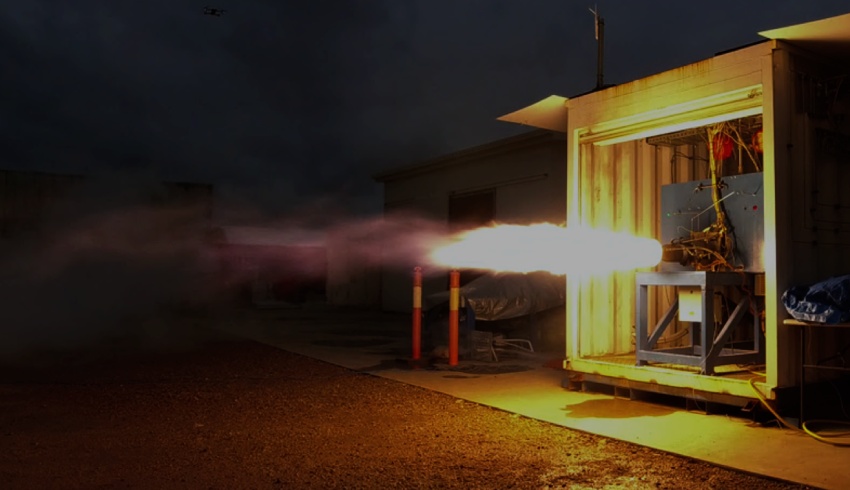The Queensland-based rocket company said building the component demonstrates Australia’s sovereign capability in space manufacturing, as liquid rocket engines, which are used by SpaceX and NASA, are “notoriously complex and expensive to develop”.
Gilmour is Australia’s largest sovereign space employer, and was founded by two brothers in 2013, specialising in creating orbital-class hybrid propulsion technologies, which are safer and cheaper than traditional rockets.
By the latter half of 2022, Gilmour is set to perform the maiden flight of its three-stage Eris rocket from the Bowen spaceport in northern Queensland, paving way for the company to begin launching 300- to 4,000-kilogram satellites and payloads into low-Earth and other orbits for customers.
Announced on Tuesday, the company shared a successful 190-second mission duty cycle (mission duration) test fire of the “regeneratively-cooled” rocket engine.
“The third stage of Eris will be powered by this new 3D printed liquid rocket engine, called Phoenix, which we developed to give us the extra performance needed to deliver substantially more payload to orbit,” said CEO Adam Gilmour.
“The team has done exceptionally well to design, build and test this new engine in just over a year while also scaling our main hybrid rocket engine, building out the rest of the vehicle, and pushing to develop a new orbital launch site in Australia,” he added.
It comes months after the company in early January successfully test fired its Sirius rocket engine, which will power the first and second stages of Eris and is currently undergoing qualification tests.
It was a 75-second test fire of the hybrid rocket engine, and it achieved an expected full thrust of 110 kilonewtons (25,000 pounds-force).
As one of Australia’s pioneering space companies, Gilmour has won a slew of government investments in recent months to further the nation’s capabilities in orbit.
In early May, the company won a $15 million contract to build and launch a new surveillance satellite for defence.
The spy satellite will be used for counter threat capabilities and to gather space-based intelligence of potential threats.
In late March, the company’s Australian Space Manufacturing Network (ASMN), a group of 30 homegrown Australian companies and universities spearheaded by Gilmour, won $52 million to support local launch capabilities.
This latest successful test fire of its Phoenix engine brings the company one step closer to performing Australia’s first locally built rocket launch.
“Our goal has always been to provide an affordable and reliable option for accessing space, and we believe this unique engine combination will allow us to achieve that for our customers,” Gilmour said.

Isabella Richards
Bella Richards is a journalist who has written for several local newspapers, her university newspaper and a tech magazine, and completed her Bachelor of Communications (Journalism) at the University of Technology Sydney in 2020. She joined Momentum Media in 2021, and has since written breaking news stories across Space Connect, Australian Aviation and World of Aviation.
You can email Bella on: [email protected]

